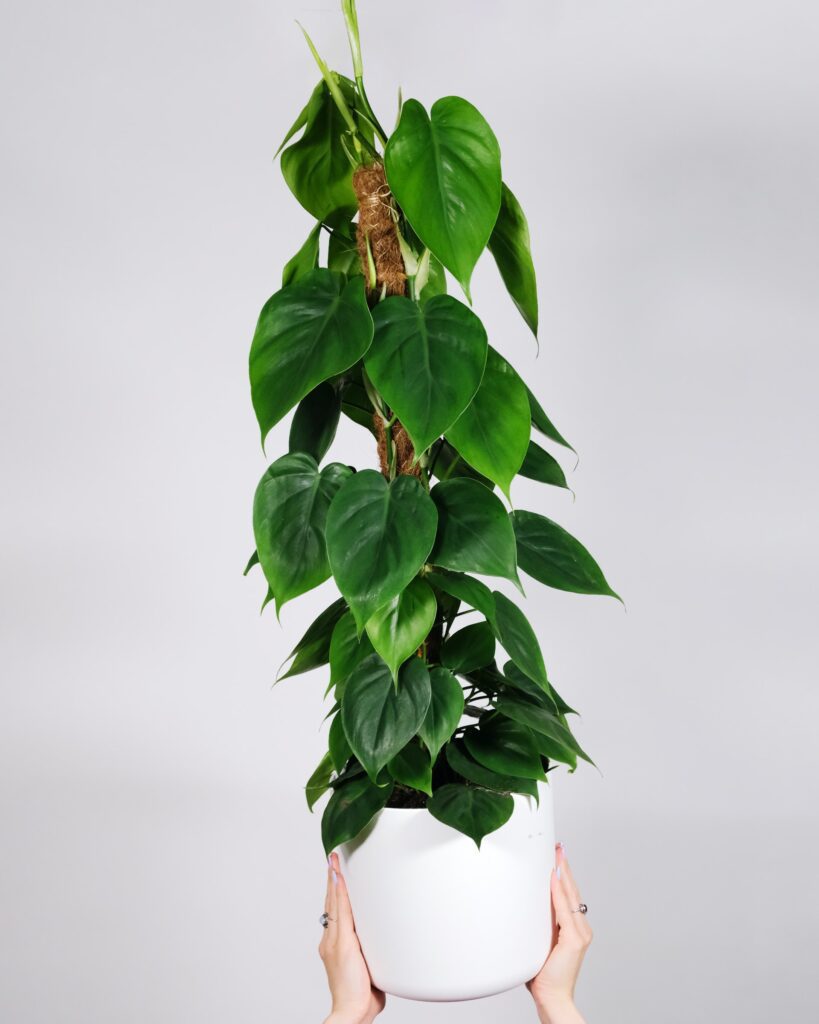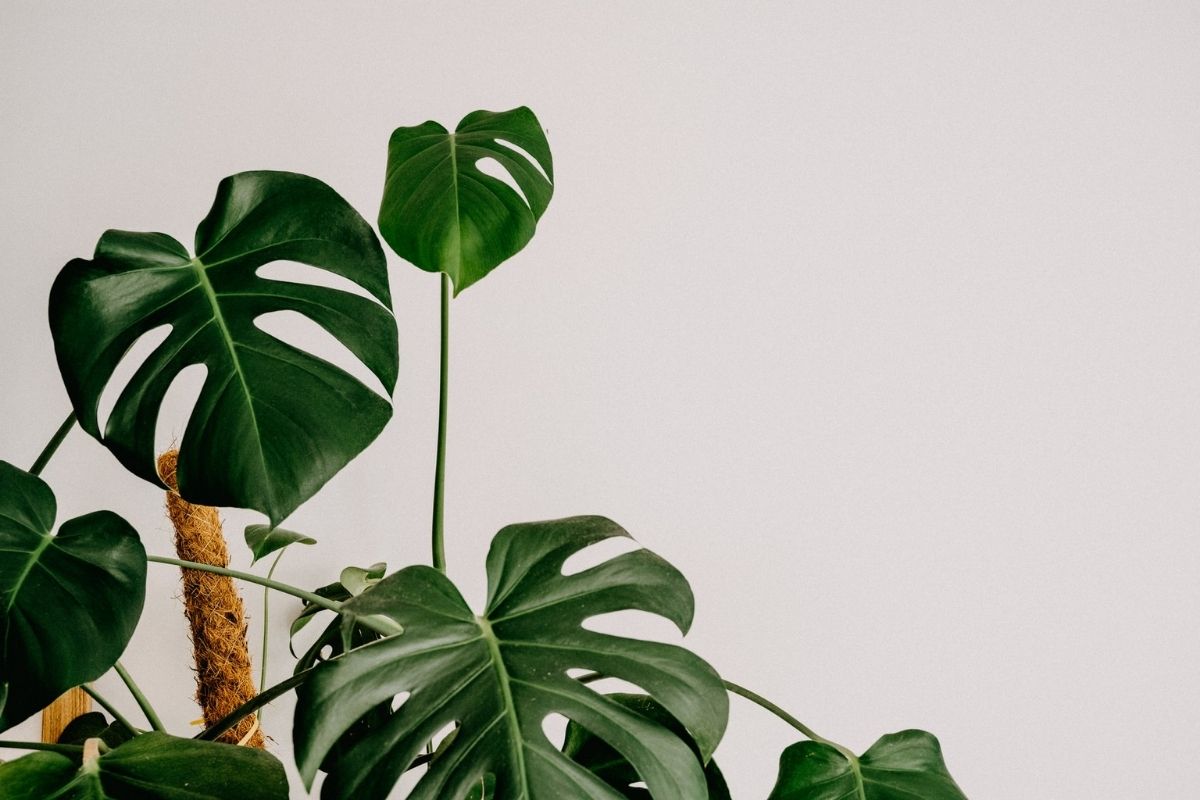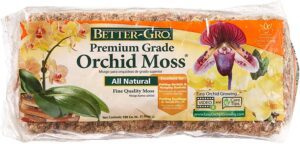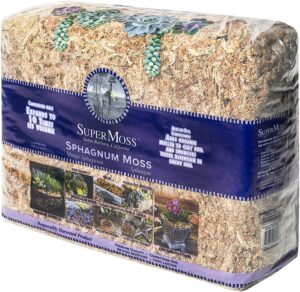Guest expert: Victor Wang, houseplant enthusiast and creator of NYC Hoya Hangout Facebook Group
There are moss poles and then there are ✨moss poles✨. And when using a moss pole for plants, you want the good kind.
Think about it: Tropical plants grow in the jungle and live in a humid environment with a lot of sunlight. These plants are so beautiful and lush and many of them are popular houseplants too. But once we take them home, we have to make sure that our homes have the right environment for them to flourish. One way to help our tropical potted plants grow is to use a moss pole.
Moss poles retain moisture so that your climbing or vining house plants can get a drink while moving away from a more traditional water source, like, say, moist soil in a pot.
Working like a plant stake, the pole helps support the house plants by providing a resting place for the vine and plant roots (aerial roots, in this case). A moss stick will then provide a water source to the plant. While sheet moss is a commonly used material for this, there are a few moss pole alternatives, such as coir, a spongy type of coco fiber.
We talked to a plant care expert and creator of NYC Hoya Hangout Facebook Group to find out what exactly makes the best moss pole.
What is a moss pole?
A moss pole provides plant support for a climbing plant and allows the aerial roots (or adventitious roots) of indoor plants to latch onto something. This helps the plant grow larger leaves. Plants that grow upward or vining plants, like pothos, will be happy if they have a moss pole to grow on.
Why should you use a moss pole for plants?
Aside from plant care and helping a houseplant grow, a moss pole also helps with corralling the climbing houseplants and keeping them within a certain area. A monstera deliciosa will grow outward. A moss pole will guide a monstera plant to grow upward and save some space. For a plant like a monstera adansonii, it will give it support to grow upward and make the Swiss cheese plant look more visually appealing.
Can you make moss poles for houseplants?
Yes! Why buy a ready-made one when it is better to make a custom moss pole for your plant. That way it will be the right size for your plant and your space.
We talked to Victor Wang, a plant enthusiast who runs the NYC Hoya Hangout Facebook Group about making a DIY moss pole. He has figured out what works and has quite a few tips and tricks!
Why do you use a moss pole?
I noticed that my plants were not growing as much so I decided it was time to make a moss pole. Once they climb to a certain degree they want to root into something for plant support. My climbing plants are ‘happier’ now that they have a moss pole. When I make moss poles, I make them self-wicking so they mimic what is in the jungle, it is moist and the vines quickly root into it.

What do you use to make a moss pole?
Initially, I didn’t like the look of moss poles and I wanted to make one that looks like a moss tree trunk. So I experimented with a lot of different materials. But now, I use PVC pipes because I like how light and strong it is. Other materials needed are paracord (nylon or polyester cord), fishing line, and moss.
I have used wooden dowels and after a year or so they start to break down. Because the soil has to be moist for plants like hoya and philodendron, I didn’t want to risk rotting the wooden dowels. I also like to use PVC pipes for my plants that are in semi-hydroponics.
How do you make moss poles for houseplants?
First I measure the PVC pipe, making sure that it is a couple of inches taller than the plant. I cut the bottom at an angle so it is easy to stick it into the soil. I use a ½ inch PVC pipe. If it is more than a foot long, I like to use the ¾ inch since it is more sturdy and can handle more weight.
I like to make self-wicking or self-watering moss poles for my plants so I do not have to water them as much. That means I use paracord, but any nylon or polyester cord works well. So, I start wrapping the paracord from the top of the pipe to about three to four inches from the bottom. That is usually enough for it to fit into the soil. I leave a tail of about six inches of the cord that will go into a water bottle or cache.
Then it’s time for the moss. I try to use sphagnum moss that has long fibers, without any sticks and leaves in it. I secure that with the fishing line and fill in any gaps with more moss.
For orchid moss, I like Better Gro and the SuperMoss brands. They are light and fluffy and they don’t get too soggy which is great, it helps avoid root rot. If the pieces of moss are small it means that you have to use more and the pole will hold a lot of water, it may be too wet for the plant. That can lead to rot, which we want to avoid.
Once you are happy with the amount of moss on the pole it can be stuck into the soil. You can also add more cord on top of the moss but I find that one layer is enough.
In case you do not want to use fishing line to secure the moss, jute twine is good too but it takes up water fast so you just have to check on the water level in the cache more often.
Read our step-by-step guide: how to make a moss pole
How do you secure a plant to a moss pole?
Plant velcro is great to use to stabilize the plant and to make sure the aerial roots are touching the moss. A twist tie and fishing line can be used too. As long as the moss is moist most plants will root into it. For some of my monstera or syngonium plants, the aerial roots grow towards the moss on its own and root into it.

How tall can you make a moss pole?
I haven’t gone higher than 18 inches long. But I want to try buying couplings to extend the PVC pipe and cover that up with moss. It’s probably hard to add to a moss pole though. And with the self-watering wick I find that the water doesn’t go all the way up to the top of an 18-inch pole. So the watering situation for an even longer pole will be different.
How wet or moist should a sphagnum moss pole be?
It should be moist but not sopping wet. The self-wicking is the most convenient because you just have to refill the water in the cache. Otherwise, the moss will have to be watered or misted. How often that will have to be done depends on the room environment. If it is dry it will have to be done more often. Usually about once a week I refill the self-watering cache or whenever I water, I water the poles too. The moss is like a sponge so it will use capillary action to even out the moisture of the pole.
Will mold grow on a moss pole?
I typically don’t have an issue with mold in a room. But when the moss pole is in a cabinet or when I’ve used it for rooting I have seen mold. I usually spray it with hydrogen peroxide or Physan 20 if I see mold which usually does the trick.
Have you used a bamboo stake as plant support?
Bamboo stakes are great, plus they are sustainable and cheap. I stake hoyas that are in soil and the bamboo stake doesn’t rot as quickly as wood. But I have switched out bamboo stakes for the most part. The plant will not root into a bamboo stake, you won’t get the same result of the bigger leaves. The vines will just grow longer.
Have you used a coco coir pole?
I have but I don’t find them as water absorbent. And my plants didn’t latch on immediately to the coco coir but they did eventually. I haven’t experimented with making moss poles out of coco coir. I have purchased it before and I like the look of a moss pole more.
That’s what I like about plants, that there is no one way to do things. It’s a lot of trial and error and seeing what you like best for your plants. I don’t have all my plants on a pole and sometimes they get leggy. But they still make me happy. And when it gets too leggy, I’ll cut it and propagate the cutting or gift it away.
More How To Guides
- How To Get Rid Of Scale On Plants
- DIY Terrarium Table: How To Make A Table With Plants Inside
- How to Use Leca for Plants: Step-by-Step Guide with Pictures
- How To Use Grow Lights For Indoor Plants
- How To Propagate Peperomia Plants 2 Ways
- DIY Propagation Box With Grow Light
- How To Make Pothos Fuller (In 5 Minutes)
- How to Make a Moss Pole for Your Climbing Plants
- How to Make Potting Soil for Indoor Plants, Plus My Secret Ingredient
- How to Propagate a Split-Leaf Philodendron: Easy Step-by-Step Guide



